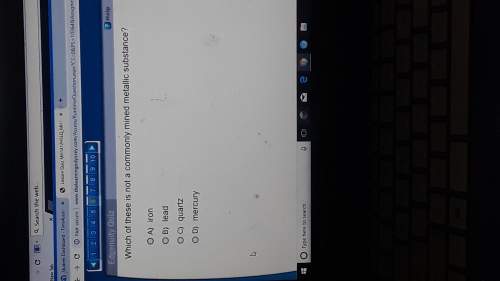
Our sun was formed
when the universe began
after many generations of stars had formed and then exploded
when stars first formed in the early universe
6000 years ago
5. the atoms that form in the cores of stars find their way into the ground, the atmosphere and living creatures on earth because of
black holes
the big bang
supernovas
nuclear fusion
6. we’ve mentioned that molecules frequently break apart and form new molecules. discuss at least five common processes where this happens.
7. we’ve seen that while the earth and the sun are composed of the same elements, the proportion that a given element makes up of the earth is generally strikingly different from the proportion of the sun it constitutes. what about other planets? are their chemical compositions more like the earth, more like the sun, or something entirely different?
8. do you think that there are living things on other planets? are there intelligent beings out there?
9. list three new things you have learned after watching this video:

Answers: 1
Other questions on the subject: Chemistry

Chemistry, 21.06.2019 22:30, Arealbot
Which statement best describes the oxidation numbers of the atoms found in magnesium chloride? a. magnesium has a 2- oxidation number and chlorine has a 1+ oxidation number. b. magnesium has a 2- oxidation number and chlorine has a 2+ oxidation number. c. magnesium has a 2+ oxidation number and chlorine has a 1- oxidation number. d. magnesium has a 1+ oxidation number and chlorine has a 1- oxidation number.
Answers: 2

Chemistry, 22.06.2019 09:00, stelllllllllllllllla
George is a dalmatian puppy. describe what happens to light that allows you to see george’s black and white coat.
Answers: 1

Chemistry, 22.06.2019 20:10, jakhunter354
The lattice enthalpy (formation of ionic solid from ions in the gas phase) for agcl(s) is -916 kj/mol and the hydration enthalpy (dissolution of gaseous ions into water) is -850 kj/mol. how much heat (in joules) is involved in forming 1l of saturated agcl solution (1.8 × 10-4 g / 100 ml water) by dissolving agcl(s)? assume solution volume does not change much upon dissolution. the equations are given below. ag+(g) + cl−(g) æ agcl(s)
Answers: 3

Chemistry, 22.06.2019 21:30, emmalucilleblaha1995
Achemical reaction is done in the setup shown, resulting in a change of mass. what will happen if the same reaction is done in a sealed container that is placed on the electronic balance?
Answers: 1
Do you know the correct answer?
Our sun was formed
when the universe began
after many generations of stars had formed a...
when the universe began
after many generations of stars had formed a...
Questions in other subjects:

Spanish, 07.10.2019 15:50

Social Studies, 07.10.2019 15:50

Health, 07.10.2019 15:50

Mathematics, 07.10.2019 15:50

Mathematics, 07.10.2019 15:50

Mathematics, 07.10.2019 15:50

English, 07.10.2019 15:50

Health, 07.10.2019 15:50

Mathematics, 07.10.2019 15:50

Mathematics, 07.10.2019 15:50







